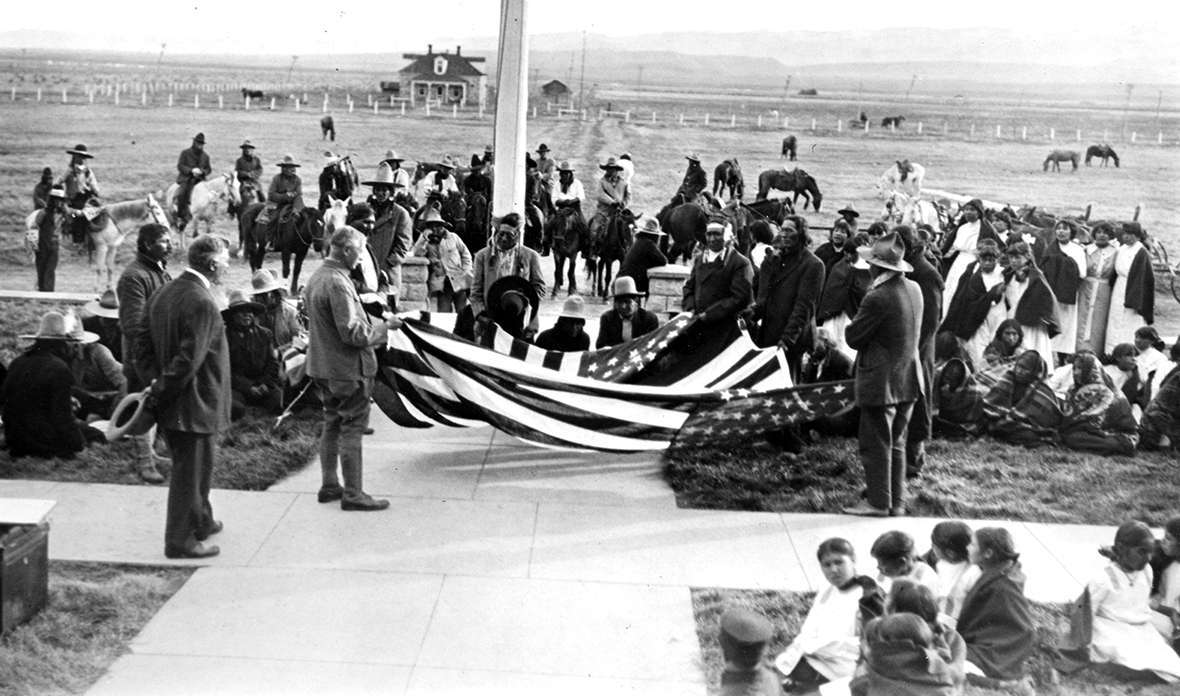You’re on Native Land

By Tom Rea
Last summer we found ourselves for a couple of days in Valentine, Nebraska, on the Niobrara River 180 miles downstream from where it flows out of Wyoming. The town lies just over the state line from the Rosebud (Sioux) reservation in South Dakota. Early one morning we went for a walk on a path that runs through town on an old Chicago and North Western right of way. The color was faded, but you could tell someone years ago had spray painted on the concrete: “Your on Native Land.”
Pretty good thing to keep in mind in North America, we agreed, especially here in the West where the transfer of control of that land is so recent. It’s a little over 150 years since the Shoshone, Arapaho, Lakota, Cheyenne, Crow and Ute tribes that roamed constantly through Wyoming were confined to reservations, and many of their children sent away from their families to White-run schools.
As a friend of ours likes to remind us, American Indians gave up more or less all the land in North America—for promises. How good a job have we done keeping those promises?
This month—October—President Biden declared Indigenous People’s day a national holiday to coincide with Columbus Day. And November, coinciding not incidentally with Thanksgiving, is now Native American Heritage Month.
The Wyoming State Historical Society’s award-winning scholarly journal, Annals of Wyoming and WyoHistory.org have published many articles over the years that shed light on the challenges Native people have faced.
On WyoHistory.org , for example, see our landing page, Indigenous People in Wyoming and the West. In 2017 the Wyoming legislature passed and Governor Mead signed a new law directing public schools to offer more about the history and culture of the Eastern Shoshone, Northern Arapaho and other tribes of the region. With the help of scholars, tribal elders and educators on the Wind River Reservation we began adding to our content about American Indians, and educators on the reservation helped us develop classroom toolkits of Wyoming history. These efforts were made possible with generous support from the Wyoming Humanities Council, the Wyoming Cultural Trust Fund, the Ellbogen Family Foundation, Wyoming school districts and the tribal members who consulted on the content.
The articles on tribal history—currently there are 22 of them—can be viewed by clicking on the “Indigenous People in Wyoming and the West” tab at the top of every page. The toolkits can be viewed by clicking on the “Education” tab. There you will find links to lesson plans for students and teachers—digital toolkits of Wyoming History, we call them. Also offered near the top of the Education page is a link to a grid that details the state standards met by each of the lesson plans. If you have any questions about either Annals of Wyoming or WyoHistory.org please contact Society headquarters at 307-322-3014, or WyoHistory.org Editor Tom Rea at 307-277-3275, editor@wyohistory.org.
And when you walk on the land, think about how long it’s been owned by whoever owns it now.
